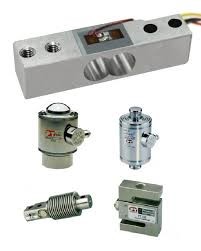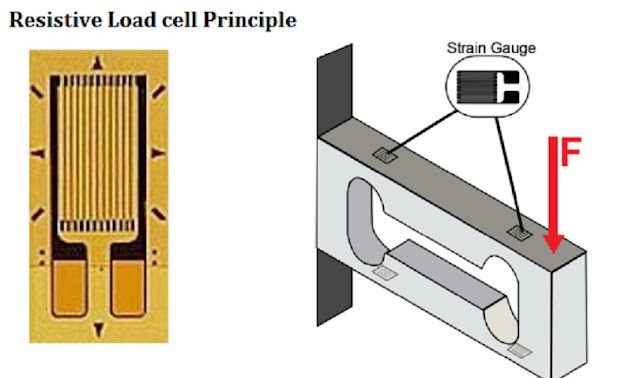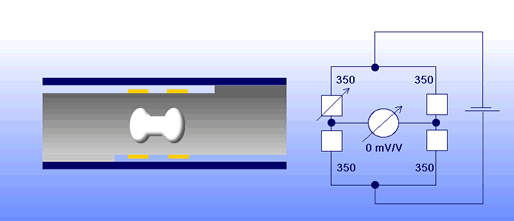A loadcell is a sensor or transducer that converts a load or force applied to it into an electrical signal. This electrical signal can be a voltage, current or frequency change depending on the type of load cell and the circuit used.

There are many different types of load cells:
1. Resistive loadcell:
Resistive load cells work based on the principle of pressure – impedance. When a load is applied to the sensor, its impedance changes. This change in impedance will result in a change in the output voltage when current flows through it.
2. Capacitive loadcell:
Capacitive loadcells work based on the change of capacitance. For a flat capacitor consisting of two parallel plates, the capacitance is proportional to the cross section of the plates and the dielectric constant of the dielectric between the two plates and inversely proportional to the distance between the two plates. When the load cell is deformed under the action of a force, the two plates will be changed relative to each other, resulting in a change in capacitance constant, then the output electrical signal will also change accordingly.
In fact, the most common load cells are based on the principle of changing resistance.
HOW DOES A RESISTANT LOADCELL WORK?
Loadcell usually consists of strain gauges glued to the surface of the load cell body. The load cell body is an elastic metal block and depending on the type of load cell and the purpose of using the loadcell, the load cell body is designed with different special shapes and made of different metal materials (alloy aluminum, stainless steel, alloy steel).

When there is a load or force acting on the load cell body, it is deformed (stretched or compressed). As a result, two of the four resistance strain gauges are compressed, while the two opposite strain gauges are stretched. That leads to a change in the length and cross-section of the metal wires of the strain gauge resistors glued on the load cell body and results in a change in the value of the strain gauges resistors.
DESCRIPTION OF OPERATING PRINCIPLES OF RESISTIVE CELL LOAD

Basic Specifications
- Accuracy: indicates the percentage of accuracy in the measurement. Accuracy depends on non-linearity, latency, repeatability.
- Rated capacity: the maximum value that the Loadcell can measure.
- Temperature compensation range: the temperature range to which the load cell output is compensated, outside this range, the output is not guaranteed to comply with the specifications given.
- Degree of protection: rated according to the IP scale, (eg. IP65: dust tight – no ingress of dust and water jets from any direction).
- Voltage: the working voltage value of the load cell (normally giving the maximum value and the smallest value 5 – 15 V).
- Latency: delay when displaying results leads to errors in results. Usually given as a % of the load.
- Input impedance: impedance is determined through S- and S+ when the load cell is not connected to the system or in idle mode.
- Insulation resistance: normally measured at DC 50V, the insulation value between the metal shell of the load cell and the current connected device.
- Mechanical damage: the value of the load at which the load cell can be broken or deformed.
- Output value: measured result (unit: mV).
- Output impedance: given as impedance measured between Ex+ and EX- under unconnected load cell or no-load operation.
- Safe overload: the capacity that the load cell can exceed (eg 125% capacity).
- Impact coefficient of temperature: a quantity measured under load, which is the change in capacity of the load cell under a change in temperature, (for example: 0.01%/10°C, if the temperature increase by 10°C, the load cell’s full load capacity increases by 0.01%).
- Impact coefficient of temperature at point 0: same as above but measured in no-load mode.
In the automated guided vehicle manufactured by IDEA, the force sensor is used as a safety level sensor. If a force greater than 10N is applied to the rim of the AGV, the device will stop immediately and report an error.
